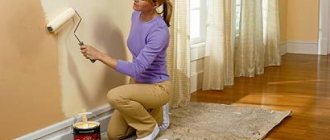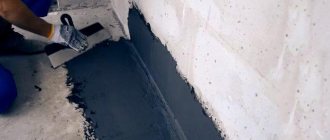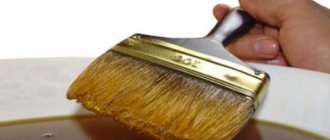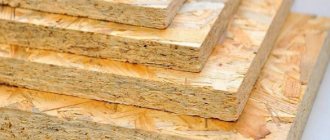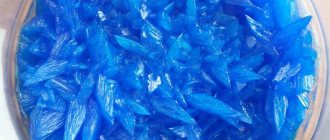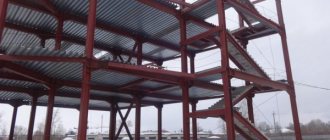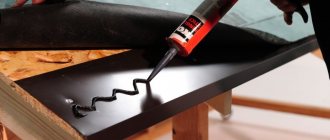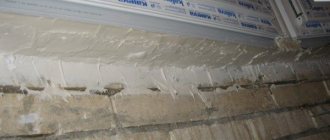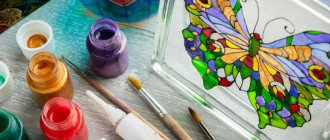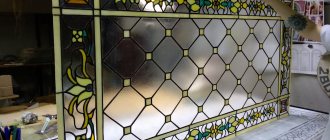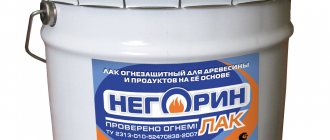Wood is the oldest building material; along with its many advantages, this material has its own “Achilles heel” - wood is susceptible to negative factors. Under the influence of moisture, wood swells and changes geometric dimensions; excess moisture creates favorable conditions for the development of harmful microorganisms that damage wood. Destructive processes occur when exposed to solar ultraviolet radiation; under the influence of sunlight, wood loses its elasticity and strength, changes color, and microcracks form.
In each historical era, different methods were used to protect wooden buildings; in the 20th century, the use of physical and chemical methods of protection came first. The wood material is pressed, boiled in chemical solutions, and treated with protective impregnations. One of the modern means of processing is liquid glass; wood processing with liquid glass is used by professional builders and private developers.
Applications of liquid glass for wooden surfaces
A building material such as wood is characterized by increased hygroscopicity.
Because of this, wood tends to become damp, as a result of which it loses up to half of its actual original strength. Another negative point is that the tree is a fire hazard. In addition, wood is a favorite habitat for a wide variety of insects, mold, fungi and bacteria.
For these reasons, it is not advisable to use wooden structures in construction and repairs without proper protection of the material, which includes treatment with liquid glass.
How meaningful is wood processing and how to carry it out?
It is recommended to apply a product such as liquid glass not to everything, but only to those wood structures that are not planned to be painted. The thing is that if a wooden house is treated with silicate glue for protection, it will be almost impossible to paint it.
This is explained by the fact that the wood becomes mirror-smooth and, accordingly, the water-repellent functions increase many times over. It is best to impregnate with the product those wooden structures that are located:
- In the basements.
- On the rooftops.
For example, elements such as beams and rafters. Other places with possible high humidity. If it is necessary to protect wood more productively, liquid glass becomes irrelevant and for this it is necessary to look for other means.
It is important to note the fact that when treating wood with liquid glass, you should ensure that the coating thickness is at least 100 microns. Otherwise, such waterproofing will be of little use.
Where else is it used?
The use of a product such as liquid glass is popular not only for direct processing of wood flooring, but also in other cases:
- Many builders use impregnation in the form of a primer for various types of walls as protection against fungal formations.
- This product is very convenient to use when laying linoleum or foam tiles on the ceiling.
- Some experts note the excellent properties of liquid glass when working with joints and pipe connections. The only negative is that the properties in this case are too good and if the part fails, it will not be possible to disassemble it and you will have to dismantle the entire structure.
- Many furniture makers also praise silicate glue and claim that its use in the repair of wooden furniture is more than relevant.
- You can not only cover wooden surfaces with a roller and brush, but also, if the product is small, dip it entirely into a container filled with liquid glass.
- Some agronomists recommend using a seed saving solution. Repeated tests have proven that if the seeds are sprayed with the mixture, they will not only cease to be negatively affected, but also the germination effect will accelerate.
- Some housewives also note the positive properties of the substance as an original dishwashing detergent. If you dilute it with water in a ratio of 1/25, then you can clean even old and greasy dishes. In addition, you can boil it.
- And finally, it is noted that when covering walls with glass wallpaper, it is recommended to first coat them with silicate glue. Thanks to this, glass wallpaper becomes stronger and more wear-resistant. This is ensured by the fact that moisture is not absorbed into them from the walls at all. Some craftsmen have gotten used to covering even the simplest wallpaper with liquid glass. They claim that this finishing film provides the wallpaper with a special shine. And if they get dirty, you can simply wipe the wall.
Finally, it is necessary to clarify that the use of silicate glue for wood is not always hidden. Take for example a house made of wood. If immediately after construction you cover it with liquid glass, then not only its visual appearance will improve, but all possible performance qualities will also increase. In addition, the visual appearance will retain its freshness for several years, which is much better than blackened and old-looking wood.
Liquid glass for wood protection.
First you need to decide what it is worth protecting lumber from.
Unfortunately, a tree cannot be protected from water that easily. And almost all wood impregnations, no matter what they write there, will not be able to protect the wood from moisture.
Fire.
The same Senezh has fire-bio protection. Yes, wood may not ignite after such treatment, but if we talk about fire, then this impregnation will not protect. Situations are different, and in some cases this impregnation may help avoid disastrous consequences. But still, it is better to simply avoid possible sources of ignition near the wood.
Temporary dampness and mold.
This is especially important for basements, where condensation from pipes or insufficient ventilation may occur, and subsequently mold may appear. Also roofs where rain may seep in or minimal condensation may also form. This is why we really want to protect our tree.
Insects.
The last point, which is very relevant for private homes, is protection from insects. Various bugs, ants, etc. can live in a tree. Therefore, it is important for us to treat the tree with some kind of chemical so that as few insects as possible have the desire to settle in such a piece of wood.
Liquid glass - what is it
Liquid glass consists of the same elements as regular glass. This is a solution of aqueous alkaline potassium or sodium silicate (Na2O(SiO2), K2O (SiO2)n)
Since liquid glass has excellent thermal insulation and waterproofing properties, it is widely used in the construction of wells, swimming pools, foundations and plinths.
Liquid glass is also called silicate glue and is excellent for gluing materials.
Liquid glass is used to impregnate fabrics in the production of acid-resistant concrete and cement, fire-resistant coatings for wood, and to create molds for casting metal products.
Let's return to liquid glass for use as an antiseptic for wood.
- Liquid glass forms a film on the surface of the wood that protects the wood from pests and other insects. Unlike other antiseptics, which are washed out over time, liquid glass can only be scraped off with a knife or washed off with special compounds.
- When exposed to flame, a film of liquid glass closes the pores of the wood, thereby preventing the access of oxygen, without which the fire does not burn.
- But keep in mind that no product will fully protect against fires. The only point is that the wood becomes more difficult to ignite, which gives additional time to extinguish the fire before it actively spreads.
- Like special products that protect wood from moisture, liquid glass copes well with temporary accumulation of moisture.
Application for waterproofing
Due to its chemical composition, liquid glass does an excellent job of filling porous materials:
When the surface is treated with a silicate composition, its hydrophobicity and strength increase. Therefore, liquid glass has become particularly widespread in the processing of foundations, walls and floors of basements, wells and swimming pools. To produce a primer with hydrophobic properties, it is necessary to combine water, cement and ironclad in equal proportions.
The surface to be treated must first be prepared: leveled and cleaned of dirt. When processing wood, it is desirable to preserve its natural unevenness (this will ensure better adhesion of materials). If you had to wet the surface during cleaning, then it must be allowed to dry before processing. The thickness of the waterproofing mortar layer must be at least 3 mm.
Silicate solution is also used when covering floors in a bathhouse or bathroom. To create a hydrophilic coating of a large area, for example, to cover a floor or walls, you can use a spray gun, roller or brush.
Application to increase the fire resistance of materials
The fire resistance of liquid glass allows it to be used for:
- masonry of fireplaces, chimneys and stoves;
- production of heat-resistant concrete and cement, as well as fire-resistant paints and varnishes;
- impregnation of wood to give it fire-retardant properties;
- covering elements of metal structures.
To prepare a fireproof silicate mortar, 3 parts sand, 1 part cement and 1 part liquid glass are required. Such a mixture quickly hardens as a result of the chemical reaction that occurs, so you can first make the necessary structure from ordinary mortar, and then apply an external coating of the concrete with a fire-resistant layer.
To give the surface fire-resistant properties, you can coat wood or concrete only with liquid glass from a spray gun, using it as a primer. Walls can also be impregnated either with a separate solution of silicates or in the form of a cement screed for the floor.
Features of working with liquid glass for wood
Protection against moisture is maintained when applying a layer of liquid glass impregnation of at least 0.1 mm. When working, the following features are taken into account:
- Use PPE (causes skin irritation and sometimes burns): gown, gloves, goggles to protect eyes.
- Clean and level the wooden surface.
- Dilute the composition with water in a ratio of 1 to 2, if the original composition is very viscous, then 1 to 3.
- To cover, use a brush or roller. For durability, coat in two layers. The second is applied after the first has completely dried.
Polymer stabilizers
Polymers act quickly because they are capable of maximally filling the pores of the material in a short period of time. They are used for processing wood using a vacuum. Some solutions can also be used at home.
"Buravit"
A low-viscosity polymer composition that is able to quickly penetrate the pores of wood, filling even the smallest free spaces. Thanks to the optical pigments in the product, the treated material acquires a more saturated fiber pattern.
"Anacrol90"
Designed for stabilization in a vacuum chamber.
The main active ingredient of the solution is polyester, which is converted into a polymer under the influence of high temperatures. The composition ensures the resistance of the treated wood to chemical reagents, as well as mechanical stress.
"100TERM"
The composition is a solution of medium viscosity containing polymers that change their density under the influence of heat. This product is popular for use in both industrial and domestic environments.
The polymer is supplied in tin cans, convenient for storage and transportation.
"Pentacryl"
This product is safe for household use because it does not contain toxic substances. At the same time, it penetrates deeply into the structure of the wood and also saturates the fibers with fat-soluble pigments, which make the design brighter and more expressive. The composition is made on the basis of alkyds.
Liquid glass
What it is
This is what uncured material looks like
- To begin with, you should still figure out what liquid glass is or, as it is also called, silicate glue, although its composition does not change at all depending on the name. This can be sodium silicate Na2O(SiO2)n (aqueous alkaline solution) and/or the same potassium solution K2O(SiO2)n. Sometimes (to coat electrodes) lithium silicate can be used in this capacity.
- The resulting component dissolves in water and has an alkaline reaction, and depending on the concentration, its pH value varies from 10-13. The finished solution may have different viscosity and density of the composition, but this directly depends on its temperature, concentration and the ratio of alkalis to silicic acid. At a temperature of 590-670⁰C, the product begins to liquefy.
- The instructions indicate that Na2O(SiO2)n and K2O(SiO2)n cannot be combined with organic substances, with the exception of urea, sugar and alcohol. Since 2008, even polishes have been produced based on it.
- Na2O(SiO2)n and K2O(SiO2)n are widely used in construction due to its waterproofing, thermal insulation and fire retardant properties.
Note. If liquid glass dries on the surface of an ordinary glass, then as a result it becomes irreversibly matte, which cannot be corrected in any way.
Wood processing
Please note that impregnation of wood with liquid glass is not impregnation in the full sense of the word, since there is a film on the surface of the lumber that cannot be coated with paints and varnishes. That is, you can apply them, but you will never be able to obtain the desired quality of finish, therefore, there is simply no point in this - it is better to do this before - for example, cover the boards with stain, and after that apply a layer of liquid glass.
But in most cases, such compositions for wood are used in those places that are not frontal - these can be elements of various frames, piles and similar engineering structures.
Application for waterproofing
Due to its chemical composition, liquid glass does an excellent job of filling porous materials:
When the surface is treated with a silicate composition, its hydrophobicity and strength increase. Therefore, liquid glass has become particularly widespread in the processing of foundations, walls and floors of basements, wells and swimming pools. To produce a primer with hydrophobic properties, it is necessary to combine water, cement and ironclad in equal proportions.
The surface to be treated must first be prepared: leveled and cleaned of dirt.
When processing wood, it is desirable to preserve its natural unevenness (this will ensure better adhesion of materials). If you had to wet the surface during cleaning, then it must be allowed to dry before processing. The thickness of the waterproofing mortar layer must be at least 3 mm.
Silicate solution is also used when covering floors in a bathhouse or bathroom. To create a hydrophilic coating of a large area, for example, to cover a floor or walls, you can use a spray gun, roller or brush.
Application to increase the fire resistance of materials
The fire resistance of liquid glass allows it to be used for:
- masonry of fireplaces, chimneys and stoves; production of heat-resistant concrete and cement, as well as fire-resistant paints and varnishes; impregnation of wood to give it fire-retardant properties; coating of elements of metal structures.
To prepare a fireproof silicate mortar, 3 parts sand, 1 part cement and 1 part liquid glass are required. Such a mixture quickly hardens as a result of the chemical reaction that occurs, so you can first make the necessary structure from ordinary mortar, and then apply an external coating of the concrete with a fire-resistant layer.
To give the surface fire-resistant properties, you can coat wood or concrete only with liquid glass from a spray gun, using it as a primer. Walls can also be impregnated either with a separate solution of silicates or in the form of a cement screed for the floor.
How to use liquid glass when processing wood
Edged lumber with natural moisture, having a moisture content of less than 22%, is processed; work is carried out at a positive temperature. To calculate the required amount of solution, a consumption of 300 g per square meter is taken. Work order:
- Liquid glass is diluted with tap water in a ratio of 1:2 or 1:3 depending on the required concentration and stirred thoroughly.
- The surface is cleaned of loose fibers, dust is removed, and in order to minimize material consumption, it is advisable to prime large cracks.
- The composition is applied to a dry surface with a flat brush with synthetic bristles or a felt roller, the layer is applied along the fibers.
- The surface is covered in 3-4 layers, the next layer is applied 1-2 hours after the previous one has dried, small parts can be treated by dipping.
- The resulting protective layer is not processed or polished.
Sodium silicate is environmentally friendly, but if it comes into contact with the skin or eyes it can cause irritation and is washed off with running water. When processing wood, precautions must be taken; it is advisable to use protective clothing and gloves.
Methods of applying material
When working with liquid materials, it is necessary to use means of physical protection for the worker, for which they use protective suits and protective masks. Contact of the solution with the eyes can cause significant harm to health.
It is recommended to apply liquid glass with your own hands using a roller or brush. The final rise of the solution occurs within about half an hour, then the next layer is applied.
Repair mortars containing cement are applied with a spatula, but when performing work, one must not forget about the immediate setting of the mixture (usually within half an hour), so the volume of a single batch must be accurately calculated.
Waterproofing with liquid glass
Waterproofing mixtures using JS make it possible to treat any structures, including concrete and wood, in established areas with humidity exceeding the norm.
Foundation
To protect the foundation from destruction in a humid environment, it is necessary to apply liquid glass for concrete. The instructions for use indicate that for maximum protection this operation should be performed twice. After application, the layer must dry completely, then apply the next one. After the concrete base is impregnated with glass, the insulation is reinforced with other technical materials.
To eliminate cracks and mask the joining seams, prepare a repair composition in the following ratio: cement - 1 kg, water 750 ml, ZhS - 50 grams. To ensure better protection of the concrete base, it is recommended to use ZhS in the form of an additive in a volume of 5% of the total mass of the mixture.
swimming pool
To eliminate leaks in the bathtub of a structure, it is necessary to treat the surface of the concrete. The solution is evenly applied to the walls and floor of the structure. After one layer has dried, apply the next one. To reliably protect the structure, it is recommended to impregnate it three times.
From exposure to groundwater
Special concrete, which contains LC, can limit the flow of groundwater.
Basement
This important structure in the house and protecting it from leaks is the main condition for maintaining a favorable climate in the apartment and in the interior. Typically, owners are faced with the problem of cracks and poor waterproofing of joints. To get rid of the problem you will need:
- Clean cracks and seams from foreign objects and dust;
- Prepare a repair mixture in the following ratio: cement – 20 parts, liquid glass – 1 part. Maximum plasticity of the mixture should be achieved, for which its consistency is controlled by the volume of water;
- Cracks are sealed with a repair compound;
- Level the repair site by plastering it with the same mixture;
- The repair area is coated with water using a brush;
- After 24 hours, a layer of GS is applied.
When performing waterproofing work, it is necessary to remember the chemical reactions that occur with mixtures in which liquid iron is present. Due to the rapid hardening of the solution, in order to save material, it is recommended to prepare small volumes for work.
Characteristics of liquid glass
The second name of the substance is silicate glue. It is an aqueous solution of sodium or potassium silicates. During electrode coating, this composition is replaced by lithium silicates. The material was first obtained back in the 19th century. Now there are several ways to manufacture a product industrially. Its parameters depend on the ratio of components that do not affect quality. However, for some applications, a certain composition is preferred.
Liquid glass, which has an alkaline reaction, dissolves in water. Acidity ranges from 10 to 13. The saturation and consistency of the composition is determined by its concentration, temperature and ratio of elements. Sodium-based material turns into a liquid state at temperatures above 600 degrees. The thickened film of sodium silicate can be dissolved by water, and under the influence of humidity and carbon dioxide contained in the air, it loses its properties.
Thanks to its waterproofing, thermal insulation and fire retardant properties, the product is used in numerous areas:
- production of building materials resistant to acids and water;
- special impregnation of fabric surfaces;
- production of fire-resistant paint;
- strengthening loose soils.
Silicate glue is used to glue cellulose materials. It is used in the production of electrodes and in the drilling process.
Important! According to the instructions, the product is incompatible with organic substances, except sugars, alcohol and urea.
Pouring the flooring
In bathrooms, showers, bath rooms and indoor swimming pools, which are characterized by constant humidity and wet floors, flooring can be made using liquid glass. To fill the floor you need:
- if wooden floors are laid, then first make a concrete screed; pour silicate solution onto the dried surface in equal portions; level the adhesive layer with a wide spatula; carry out the final leveling of the 3-5 mm thick layer using a squeegee; after the silicate layer has dried, apply a finishing coat of varnish ( polyurethane or epoxy would be better).
It is worth considering that it is impossible to decorate a floor already covered with liquid glass. When pouring a concrete screed, the floor surface will have a corresponding “concrete” color and texture.
Decorating the floor must be done before applying a layer of liquid glass. Alternatively, you can paint the concrete. At the same time, it is recommended to add a small amount of silicate to paints and varnishes to improve their adhesion to concrete. After the paint has dried, you can fill the floor according to the above algorithm. By the way, taking into account the non-toxicity of the material, its heat and water resistance, it can be used to treat a steam room, which is most often made of wood and can be subjected to constant exposure to moist hot air without proper care deformation.
Product selection
The structure, density and cost of the material depend on the method of its production and the components used. According to the most elementary method, the substance is obtained from silicon-containing raw materials combined with an alkaline mixture at certain values of pressure and temperature.
There are several types of liquid glass for dissimilar surfaces. Before choosing a product, you usually get acquainted with its characteristics and determine its suitability for the desired coating. For wood surfaces, sodium silicate adhesive is usually used. You should study the information on the packaging:
- where the products were made;
- shelf life;
- precautionary measures.
